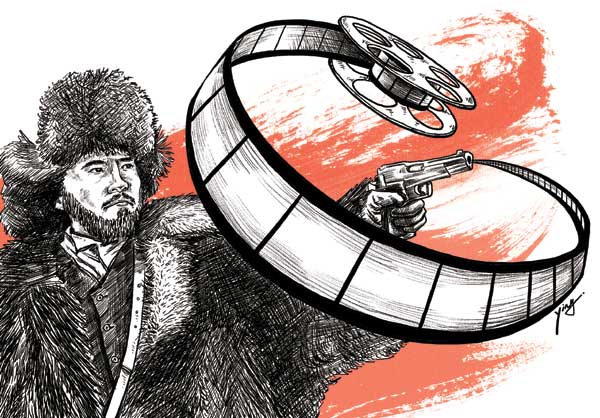Hit reinvigorates Tiger Mountain
Updated: 2015-02-02 07:41
By Raymond Zhou(China Daily)
|
|||||||||||
 |
|
Wang Xiaoying / China Daily |
Before Tsui Hark's new film came out at year's end, I, like many critics, was expecting a fiasco. How likely could it be that a filmmaker reared in a freewheeling capitalist system would be able to adapt a "revolutionary" work? The values would clash violently, I presumed.
Surprise, surprise! The Taking of Tiger Mountain turned out to be a runaway hit, not only at the box office, to the tune of 800-plus million yuan (more than $128 million), but by word-of-mouth. The Hong Kong director has accomplished the near impossible-he has brought new relevance to a relic of the "cultural revolution" (1966-76).
To understand what Tsui has done, one has to have a firm grasp of China's cultural scene some 40 years ago. To put it bluntly, there was no culture as most would see it today. Almost all artists were sent into exile or labor camps. The whole population subsisted on only a dozen shows, which were filmed and screened repeatedly across the nation.
There is a lot of misunderstanding about the so-called Eight Model Operas. First of all, they were not born during the "cultural revolution"; most had their first incarnations before 1966. They were handpicked by Jiang Qing (Madame Mao), who essentially served as the producer, or even director, giving specific instructions on every detail, during the metamorphosis into what people later saw en masse. Even Mao himself had a hand in changing the ending of Shajiabang-by supplanting a subterfuge with a direct attack on the enemy. There was also lots of shuffling in casting as renowned performers became the targets of denunciation and were hastily replaced with younger peers.
Suffice it to say, only when the eight shows were filmed-some more than once-was it possible for them to gain a nationwide audience. They were re-adapted for the stage by local performing ensembles, often imitating every move of the screen version. Since they were the staple among a dozen films still permitted for public consumption and received numerous screenings, most people could recite every line.
Related Stories
'The Taking of Tiger Mountain' passes 800 ml yuan mark 2015-01-14 15:09
Tiger Mountain stars comment on film 2014-12-29 11:19
Wisdom is seeing life for what it really is 2015-01-14 15:47
A filmmaker's real-life drama 2014-12-25 07:26
Best bets along Beijing's backbone 2014-12-08 07:39
Today's Top News
EU prolongs sanctions against Russia
Italy's presidential election begins
China's port project in Greece not affected
Royal Mail Chairman to step down
Trial finds GSK Ebola shot safe, with immune response
Russian Delegation stripped of voting rights at PACE
China and Greece 'willing to continue cooperation'
China hails German leaders' call to remember history
Hot Topics
Lunar probe , China growth forecasts, Emission rules get tougher, China seen through 'colored lens', International board,
Editor's Picks

|

|

|

|

|

|





